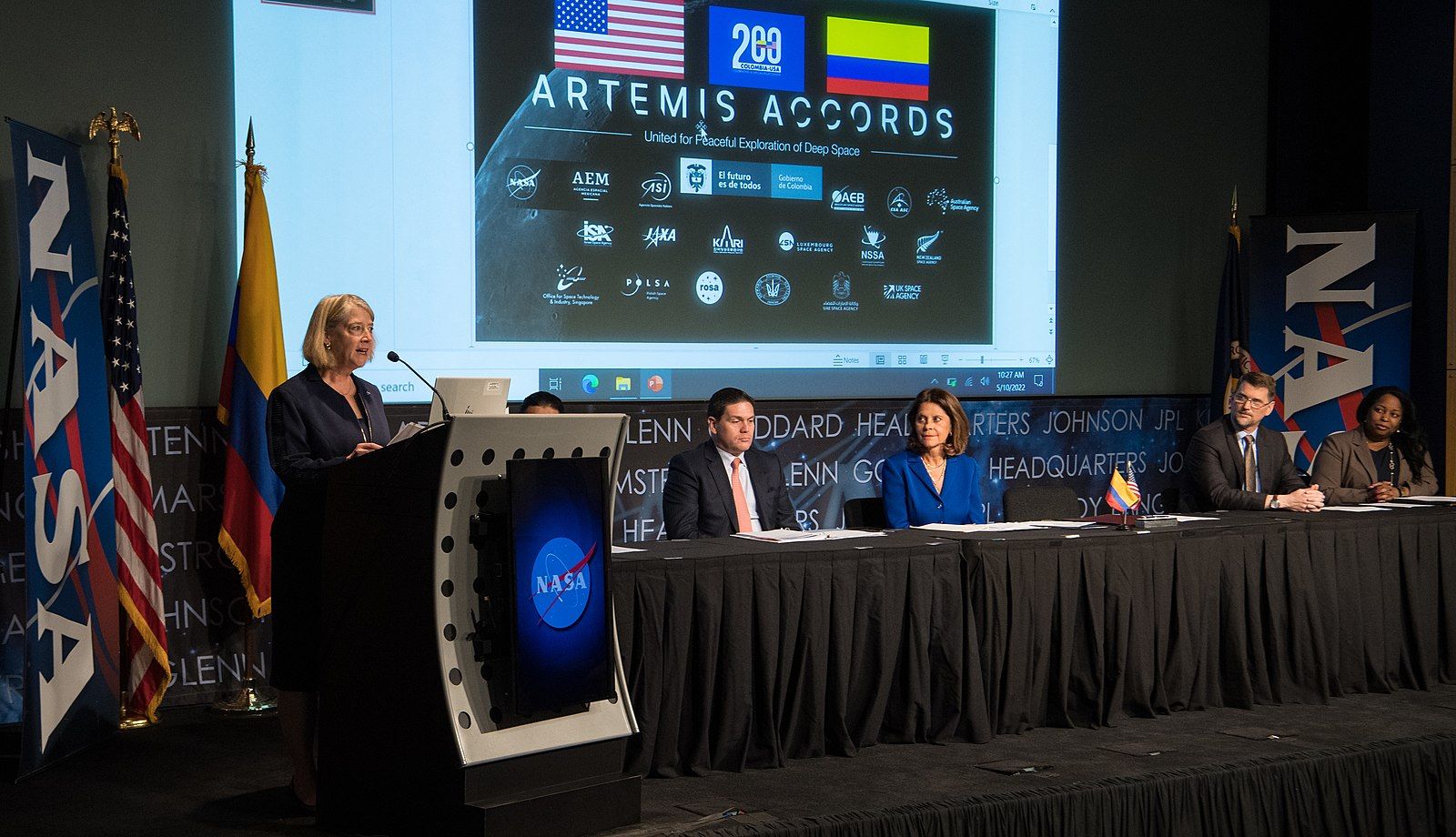Visions of future space travel usually focus on the utopian facets associated with breaking through the final frontier and exploring the great beyond, but what might happen when the international dynamics on Earth extend beyond the stratosphere? That is the question that the Artemis Accords aims to answer: they are a series of bilateral agreements signed in 2020. The agreements attempt to establish cooperation on a US-led endeavor to bring humans back to the moon by 2025 with the eventual goal of interplanetary exploration. The Artemis Accords are based on several principles including peace, transparency, interoperability, emergency assistance, and minimizing resource conflict. The Artemis Accords currently have 21 party nations, including the United States, who initially drafted the agreements. The most notable nations “involved”, however, are actually two non-parties to the agreement: China and Russia. Although one would hope that the technological progressions associated with space exploration would automatically ameliorate fraught international relationships, the reality is that they might exacerbate existing tensions.
One potential area of conflict could be the international battle over resource extraction on the moon. The Artemis Accords establish that when nations engage in mining activities on the moon, they do not obtain property rights over the extracted materials. These Accords, however, are not legally binding and are merely a formalized understanding between the parties of the agreement. The Accords attempt to counter this issue through the creation of “safety zones” where nations cannot interfere with other nations’ resource extraction activities. While safety zones might be able to resolve international tensions, they also could be the source of a new issue. The Accords lack a clear mechanism to designate which nations get what territory. The distribution of equitable territories with ample resources does not seem to be a process that naturally lends itself to a neutral outcome. Additionally, some criticize the Artemis Accords for being too US-centric and possibly leading to unideal outcomes for other nations—with some of the most ardent opposition coming from China and Russia. As such, the battle for territory on the moon could resemble conflicts in the South China Sea and in Ukraine as foreign powers skirmish with each other for additional land and resources.

Beyond the potential for conflicts between international governments, the Artemis Accords neglect another important entity: private corporations. Elon Musk and Jeff Bezos have made headlines with their space exploration efforts through their private companies (SpaceX and Blue Origin, respectively). Previous space agreements have declared that governments are liable for private companies’ activities in outer space. However, this seems to lack coherence in domains such as space travel, where jurisdictional issues are far more ambiguous. The Artemis Accords shed private corporations of responsibility and create a scenario in which rogue private entities could violate the terms of the agreement without facing severe consequences. This might create a scenario in which an outer space conflict between the United States, China, and Russia becomes increasingly complicated with the presence of non-state actors that are acting on behalf of their own interests. Given that the Artemis Accords do not prohibit military action on the moon, the consequences of an international space conflict extend far beyond diplomatic bickering. Any potential military conflict would, however, mitigate the power of private corporations, which presently do not have any military operations. While the Artemis Accords aim to serve as an important mediator among state actors, the agreements lack an enforcement mechanism for non-state actors who have their own intentions.
The endless possibilities of space can inspire an overwhelming sense of optimism, but also can generate a multitude of thoughts about the downsides of space exploration. The final frontier will not necessarily act as an ultimate peacemaker for nations that have fought many explicit and implicit conflicts against each other. The Artemis Accords acknowledge this possibility and attempt to resolve these tensions through negotiated terms and a formalized signatory process, which demonstrates the support of nations. Good intentions, however, can be marred by pragmatic outcomes and the drive for power. The struggle between the United States, Russia, and China might not stay contained to Earth, and their conflict could spill over to outer space. The future of international space cooperation might be reliant on amending the Artemis Accords or devising a new agreement altogether.
Cover Photo: Moon Colony, in 1995. Photo by NASA/SAIC/Pat Rawlings, NASA's Exploration Office, Johnson Space Center (JSC). Image is in public domain, accessed via Wikimedia Commons.




